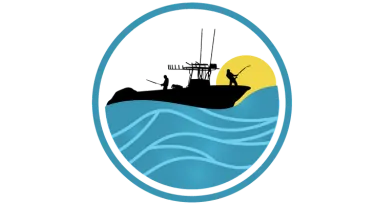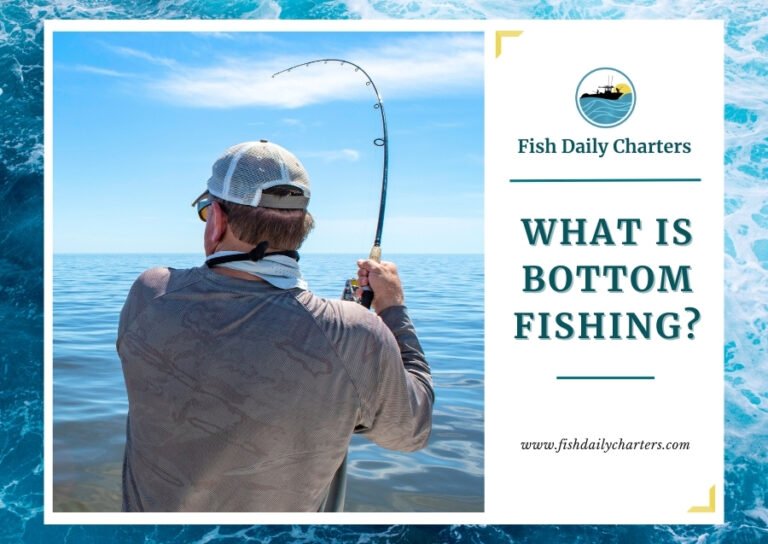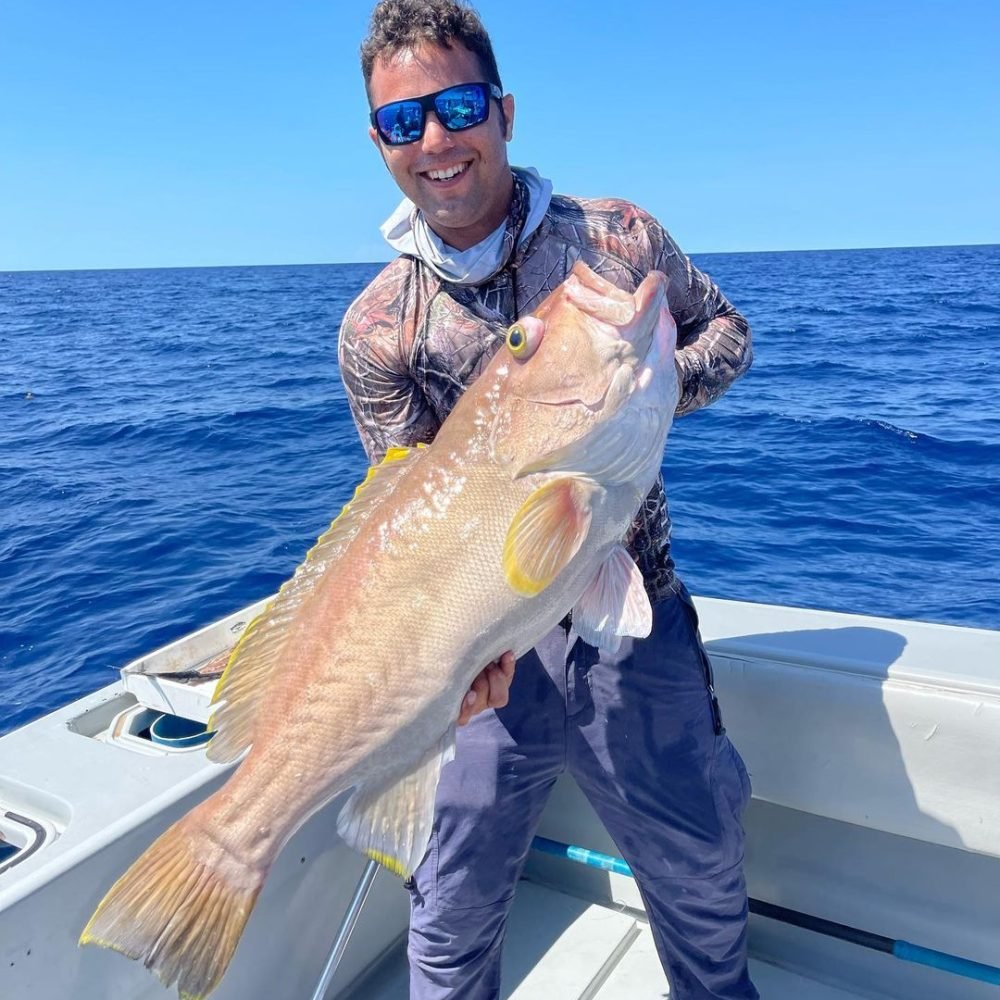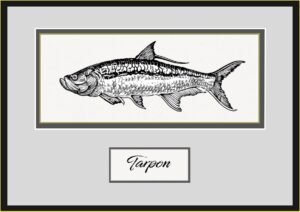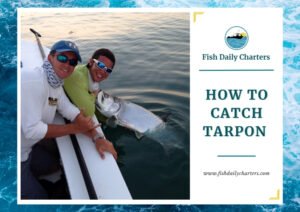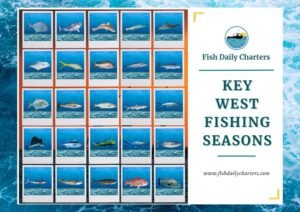Bottom fishing is one of the simplest and most effective ways to catch fish like snapper, grouper, catfish, and more. Here’s how you can do it:
- Set Up Your Gear
- Fishing Line: Use fluorocarbon for clear waters, braided line for deeper areas, or monofilament as an affordable option.
- Rigs and Sinkers: Attach a weighted sinker to your rig to keep your bait near the bottom. Use lighter line near the hook to avoid losing the whole setup if it snags.
- Bait and Hooks: Choose live bait (like small fish or shrimp) or pre-made groundbait to attract bottom-dwelling species.
- Find the Right Spot
Use a GPS or sonar to locate underwater structures like rocky bottoms, ledges, or wrecks—these are hotspots where bottom-dwelling fish gather. - Cast and Wait
Drop your rig so the baited hook reaches the bottom of the lake or ocean, then let it sit. Bottom fishing is all about patience, so give the fish time to approach. A sensitive rod or an alert like a jingle bell can help you detect bites. - Be Ready for Snags
Bottom structures can cause snags. Use a lighter line near the hook, so if it breaks, you don’t lose your entire rig. Pre-tied rigs can save time if you need to switch quickly.
Why Bottom Fishing Works
This technique targets fish living in the demersal zone, where they feed and shelter. It’s perfect for anglers of all levels because it doesn’t require constant reeling or casting. Plus, it’s versatile—you can fish from boats in deeper waters or cast from the land along the shoreline.
With the right setup and approach, bottom fishing offers a relaxing and rewarding way to catch some of the most sought-after species in lakes and oceans.
| Topic | Details |
|---|---|
| What is Bottom Fishing? | Bottom fishing is a technique where a weighted line with bait is dropped to the bottom of a lake, ocean, or river to target fish living near the seabed. |
| Who Should Try It? | Great for beginners due to its simplicity, but also effective for experienced anglers targeting larger, bottom-dwelling species like snapper, grouper, and catfish. |
| Essential Gear |
|
| Where to Bottom Fish | Use sonar or GPS to find reefs, wrecks, rocky bottoms, or ledges where bottom-dwelling fish gather. Suitable for fishing from boats or from the shoreline. |
| Techniques and Tips |
|
| Common Target Species | Snapper, grouper, catfish, halibut, porgies, grunts, and other bottom-dwelling fish. |
| Why Bottom Fishing is Effective | It targets fish in their natural habitat near the seabed, making it a reliable technique with high success rates for catching a variety of species. |
| Sustainability Tips |
|

When and Where to Bottom Fish
When to Bottom Fish: Bottom fishing is enjoyed by most anglers year-round. It’s more rewarding during the warmer months when fish are more active. For the best results, try going early in the morning or late in the afternoon. Each season brings its own special opportunities:
- Spring and Summer: Prime times for bottom fishing as many species are more active and easier to catch.
- Fall: Can be productive, especially for certain species like grouper and snapper.
- Winter: While fish are less active, some species, like cod and halibut, are still plentiful in colder regions.
Where to Bottom Fish: Bottom fishing spots are found all over the world, each offering unique fishing opportunities:
- North America: The Gulf of Mexico, California coast, Alaska, and especially Key West, Florida. All are well known for their rich marine life and excellent bottom fishing opportunities.
- South America: The coasts of Brazil and Argentina are hotspots for bottom fishing, attracting anglers from around the world.
- Europe: The Norwegian fjords and the Mediterranean Sea. They provide mixed environments for bottom fishing.
- Asia: Coastal regions of Japan and Thailand are well-known for their abundant bottom fishing grounds.
- Australia: The Great Barrier Reef and the Western Australia coast offer some of the best bottom fishing experiences.
- Africa: Coastal waters of South Africa and Mozambique are prime locations for targeting bottom-dwelling fish.

Why Choose Bottom Fishing?
A lot of anglers like bottom fishing because of its unique challenges and rewards. Unlike other fishing techniques, bottom fishing allows you to target bigger fish that live in deeper waters. The thrill of the bite and the fight these fish put up make the experience unforgettable. It’s a fantastic way to enjoy the natural beauty of the ocean and bring home a delicious catch.
Pros and Cons of Bottom Fishing
Pros:
- Variety of Species: Bottom fishing allows you to target a wide range of fish species.
- Excitement: The fight between the angler and the fish provides an adrenaline rush.
- Accessibility: Suitable for both beginners and experienced anglers.
- Scenic Locations: Often happening in beautiful and diverse marine environments.
Cons:
- Gear Requirements: Requires specific and sometimes expensive gear.
- Patience Needed: It can be time-consuming and requires patience.
- Physical Demand: Reeling in large bottom-dwelling fish is physically challenging.
- Environmental Impact: It’s important to be cautious in order to protect vulnerable marine environments.
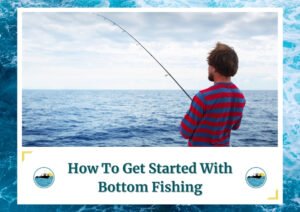
How to Get Started with Bottom Fishing
The Gear You Need: To start bottom fishing, you need the right gear:
- Fishing Rod and Reel: A strong rod and reel are essential, as you’ll be dealing with heavier fish and deeper waters.
- Rigs and Hooks: You need a rig, which includes a hook, a sinker, and sometimes a sliding sinker to help your bait reach the bottom quickly. Circle hooks are often recommended for bottom fishing.
- Bait: Live bait like shrimp, squid, or small fish works well for bottom fish. Lures can also be effective.
- Line: Use a heavy-duty fishing line to handle the weight and resistance of bigger fish.
Techniques for Bottom Fishing
Mastering bottom fishing techniques involves preparation and choosing the right spot. You also need to use the right bait and effective fishing methods. Follow these steps to boost your bottom fishing success:
Step 1: Choose the Right Spot
- Look for areas with a rocky bottom, reefs, or bridge pilings. These spots provide great fishing. They are natural habitats for bottom-dwelling fish.
Step 2: Use the Right Bait
- Live bait, such as shrimp or small fish, is highly effective for bottom fishing. Additionally, artificial lures can also attract fish by mimicking the movement of prey.
Step 3: Drop Your Line
- Lower your rig, which includes a hook and a sinker, to the ocean floor. Jig your line here and there to tease and attract fish. The goal is to reach the bottom where the target fish live.
Step 4: Use Effective Fishing Techniques
- Anchoring: Secure your boat in one spot to fish a specific area thoroughly. This method is really useful over reefs and rocky bottoms where fish gather.
- Drifting: Allow your boat to drift with the current to cover more ground and locate fish. Drifting works well in open areas with less underwater structure.
- Trolling: Slowly move your boat while dragging baited lines behind. Trolling is excellent for locating schools of fish over a wide area.
Step 5: Be Patient
- Bottom fishing requires patience. Wait for the fish to bite, and once they do, be ready to reel in quickly. The excitement of the catch makes the wait worthwhile.
By following these steps and using the right techniques. You will increase your chances of a successful and enjoyable bottom fishing trip.
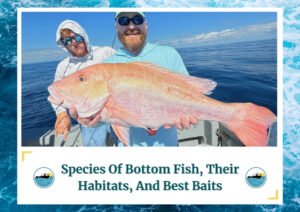
Species of Bottom Fish, Their Habitats, and Best Baits
Understanding the habitats and preferences of different bottom fish species will decide your fishing success. Using the right bait is important to attract these fish. Here’s a comprehensive look at common bottom fish species, their preferred habitats, and the best bait to use:
Grouper
- Habitat: Grouper are often found near rocky formations, reefs, and shipwrecks. These structures provide cover and attract prey, making them ideal hunting grounds for grouper.
- Best Bait: Live bait such as shrimp, squid, and small fish are highly effective for attracting grouper due to their natural movement.
Snapper
- Habitat: Snapper prefer areas with plenty of cover, such as coral reefs and underwater structures. These environments offer protection and abundant food sources.
- Best Bait: Both live bait (shrimp, small fish) and cut bait (pieces of fish or squid) work well for snapper. Artificial lures can also be effective by mimicking the movement of prey.
Halibut
- Habitat: Halibut is typically found in colder waters, settling on sandy or muddy bottoms in deeper regions of the ocean.
- Best Bait: Live bait and cut bait are both suitable for halibut. Pieces of fish or squid are very effective because of their scent and texture.
Cod
- Habitat: Cod are found in deep, cold waters and prefer rocky and sandy bottoms. They often live in areas with strong currents and abundant food.
- Best Bait: Cut bait, such as pieces of fish or squid, works well for cod. Live bait also attracts cod, especially in colder waters.
Red Snapper
- Habitat: Red snapper are commonly found around reefs and structures in warmer waters. They do best in environments that offer both protection and food.
- Best Bait: Live bait like shrimp and small fish are perfect. Red snapper also responds well to cut bait and certain artificial lures.
Yellowtail Snapper
- Habitat: These fish are typically found around reefs and rocky areas. They prefer warm, tropical waters.
- Best Bait: Live bait such as shrimp and small fish. Yellowtail snapper are also attracted to cut bait and lures that mimic their natural prey.
Amberjack
- Habitat: Amberjack are known to populate areas around reefs, wrecks, and offshore structures. They prefer deeper waters and are often found in schools.
- Best Bait: Live bait, including small fish and squid, is popular and works great. Amberjack are also known to strike at larger lures that mimic baitfish.
Other Bottom-Dwellers
- Habitat: Other bottom-dwelling species are found in similar habitats. These include rocky bottoms, reefs, and sandy or muddy ocean floors.
- Best Bait: Depending on the species, a combination of live bait, cut bait, and artificial lures are used. It’s important to match the bait to the specific preferences of the target species.
Selecting the Best Bait for Bottom Fishing The type of bait used impacts your catch rate. Here are some popular options:
- Live Bait: Shrimp, squid, and small fish are highly effective in attracting bottom fish due to their natural movement and scent.
- Cut Bait: Pieces of fish or squid also work well, especially for larger species. The scent and texture of cut bait make it an attractive option for many bottom-dwellers.
- Artificial Lures: While not as common, certain lures mimic the movement of prey and attract fish. Lures are especially useful when live or cut bait is not available.
By knowing the habitats and bait preferences of different bottom fish, you will improve your chances of successful and fun bottom fishing.

Boats and Equipment
For bottom fishing, boats equipped with fish finders and GPS will boost your fishing experience. These tools help you locate the best fishing spots and check the ocean floor’s terrain. Many charter boats come fully equipped with all the gear. This makes it easy for you to enjoy a day of fishing without worrying about equipment.
Safety Considerations
Safety is important when bottom fishing, especially in deeper waters far from the shore. Here are some useful safety tips:
- Life Jackets: Always wear a life jacket when on a boat.
- Weather Check: Track weather conditions and avoid fishing during storms or rough seas.
- Sun Protection: Use sunscreen, hats, and sunglasses to protect yourself from the sun.
- Stay Hydrated: Bring plenty of water to stay hydrated during your fishing trip.
Environmental Impact and Sustainable Fishing Practices
It’s important to consider the environmental impact of bottom fishing. Sustainable practices ensure that fish populations remain healthy for future generations:
- Catch and Release: Practice catch and release for non-target species or when you’ve reached your limit.
- Use Barbless Hooks: Barbless hooks reduce injury to fish, making it easier to release them safely.
- Respect Local Regulations: Always follow local fishing regulations, including size and bag limits.
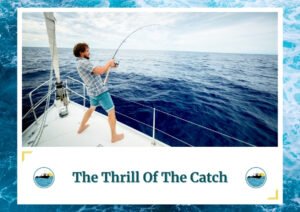
The Thrill of the Catch
One of the best parts of bottom fishing is the thrill of the catch. When a fish bites, you’ll feel a strong pull on your line. Be prepared for a good fight as you reel in your catch. This excitement is what keeps anglers coming back for more. The sense of accomplishment when you finally land a big fish is unparalleled.
Planning Your Fishing Trip
Ready to try bottom fishing? Plan a fishing or boat trip with experienced guides who know the best spots and techniques. Whether you’re a beginner or an experienced angler, bottom fishing offers a fun and rewarding experience. Many charter services provide everything you need, from gear to expert advice, ensuring a memorable fishing trip.
Bottom Fishing Charter in Key West, Florida!
Are you eager to feel the thrill of bottom fishing in one of the world’s most stunning destinations? Spend a day with us on the waters of Key West, Florida! Our seasoned guides will lead you to prime fishing spots, supply high-quality gear, share their expert tips, and ensure you have a fun and rewarding trip.
Don’t let this adventure pass you by—book your bottom fishing charter in Key West today and create unforgettable memories on the water!
Conclusion
Bottom fishing is an exciting and effective way to catch fish. With the right gear, techniques, and a bit of patience, you’ll enjoy the thrill of catching bottom-dwelling fish. The combination of anticipation, technique, and the fight of reeling in a catch makes bottom fishing a favorite among anglers.
Book a trip with Fish Daily Charters in Key West. You will have an unforgettable fishing experience and learn about different fishing techniques and the fish you catch. Check out our blog for more insights and tips on making the most of your fishing adventures. Happy fishing!
